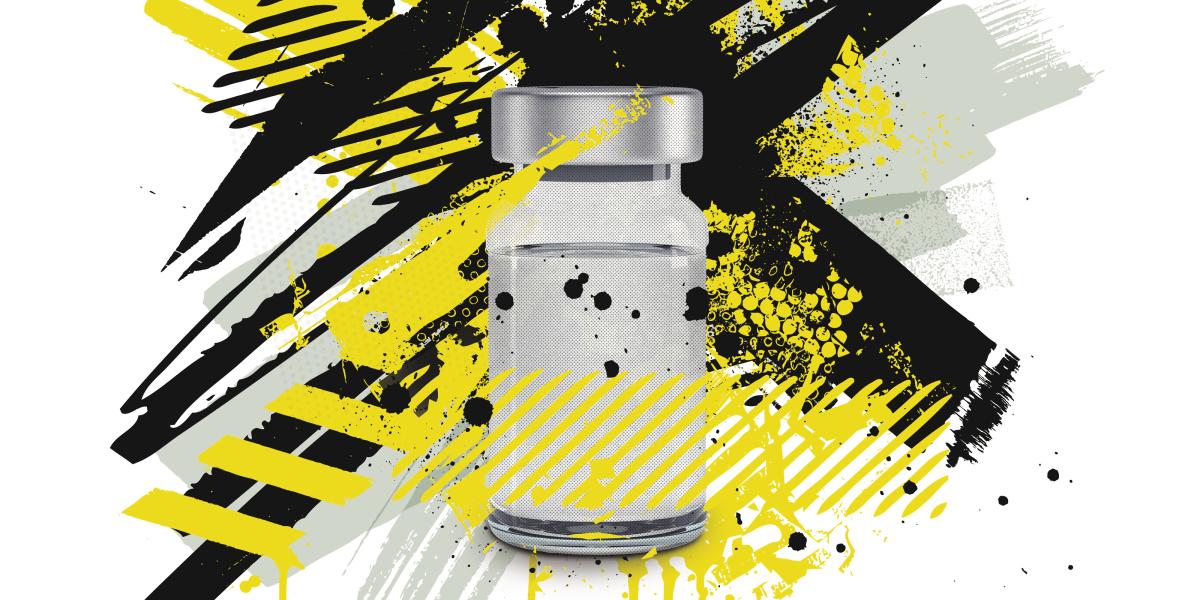Xylazine: The New Overdose Crisis
An animal tranquilizer is turning up in illicit opioid supplies, raising the risk of harm and death.
When she entered Cooper University Hospital’s outpatient clinic in Camden, New Jersey, in October 2021, Ashley* could barely walk.
Open wounds—a common result of injecting the drug xylazine—covered her legs from ankles to knees. She had already sought addiction treatment at another hospital, but the staff had dismissed her severe pain. But a doctor working at Cooper that day happened to have trained at Temple University Hospital in Philadelphia—an epicenter of xylazine use and overdose—and recognized the 29-year-old’s symptoms. Ashley cried in relief.
"I was terrified to get help,” she says. After being admitted, her wounds were so painful that she had to be sedated the first several times her dressings were changed.
A veterinary tranquilizer sometimes referred to as tranq or sleep cut, xylazine began appearing in the mid-Atlantic’s illicit drug markets as early as 2006. Its presence slowly increased, and overdose deaths involving the drug have ballooned 20-fold in several cities and states since 2015. Xylazine combines powerfully with fentanyl to produce a longer high, and it’s easily diverted from legal sources like farms and veterinary facilities. It’s also cheap: $6–$20 per kilogram, per the DEA, while a similar amount of fentanyl cost $10,000 to $90,000 in 2019.
Using xylazine can come at a high physical cost: It causes profound sedation and hypotension and has been associated with deep, unhealing wounds characterized by dark, dead tissue—independent of the injection site—which put people using it at high risk of amputations.
Ashley has lived at the crest of the xylazine wave for years. Unbeknownst to her, the opioids she used were likely cut with xylazine as early as 2017. Now, she is one of the first case studies for xylazine withdrawal treatment. Because xylazine is not an opioid, established medications like methadone and buprenorphine cannot address its debilitating withdrawal symptoms.
“We don’t know what the best way is to manage xylazine dependence and withdrawal, to be honest,” says Ashley's doctor, Matthew Salzman, MD, a Bloomberg Fellow and an assistant professor of Emergency Medicine at Cooper. “I’d like to think that I practice evidence-based medicine and am current with my practice, but the truth is, this is something that we’re still learning about.”
Salzman estimates that the vast majority of his patients who use drugs are now getting xylazine in their supply, but the extent of xylazine's role in the region’s overdose crisis is still unknown. Many medical examiners do not test for xylazine, few emergency departments test patients for it, and public health data remain limited.
However, this may soon be changing—at least in Maryland. In collaboration with the Maryland Department of Health, Renee M. Johnson, PhD, MPH, an associate professor in Mental Health, received funding from the Bloomberg American Health Initiative to bolster monitoring efforts. As the Maryland Xylazine Workgroup, they will soon publish an initial report with data from Maryland’s overdose reporting system, drug testing program, and Vital Statistics Administration.
The report’s findings are still awaiting final approval, but Johnson hints at the forthcoming data’s potential value for toxicologists. “There appears to be a very wide range in how much xylazine it takes to contribute to an overdose,” she says. “It's hard to tease apart what’s the fentanyl and what’s the xylazine—what’s contributing to death,” she says.
Across the country, another Bloomberg Fellow, Wren Ronan, director of services for Portland Street Medicine, is bracing for xylazine’s impact in the Pacific Northwest. The drug has just recently begun to appear in the local supply, says Ronan.
“It’s just really clear that the basic infrastructure to address what’s coming—what we know is coming—is just not available at all,” says Ronan, who’s already seen individuals with xylazine’s trademark tissue necrosis. Staff at Portland’s hospitals aren’t sufficiently aware of xylazine symptomatology to adequately respond to the emerging wound care needs, Ronan says.
Another obstacle for patients is the pervasive stigma among health care providers against people who use substances, particularly those with wounds. The devastating effects of this stigma range from inadequate care and poor treatment outcomes to patients delaying or avoiding care altogether.
“[Some nurses] just think, ‘She was on drugs, so she just wants to be high more,’” says Ashley. She now realizes she almost lost both of her legs because of her fears of poor treatment. Her positive experience at Cooper remains relatively uncommon.
Harm reduction approaches like street medicine could help fill the gaps. Cooper Medical School’s street medicine program, for example, connected Ashley with a wound care clinic when she was discharged. Her healing process is ongoing, but she is now able to change her own dressings. She is looking forward to being able to swim and ice skate again one day.
Another potential solution is safe supply, a harm reduction strategy to distribute uncontaminated drugs to mitigate consumers’ risk of overdose. As xylazine becomes a more ubiquitous adulterant, safe supply could also help prevent amputations and secondary infections. While not yet commercially available, xylazine test strips and overdose reversal medications could be another part of the solution.
“I think that both surveillance and new programming are a side-by-side need that we have right now,” Ronan says. But as new data emerge at what feels like a crawling pace, harm reductionists and those on the leading edge of xylazine treatment are tasked with the urgent priority of keeping people alive in the meantime.
*Last name withheld due to privacy concerns
